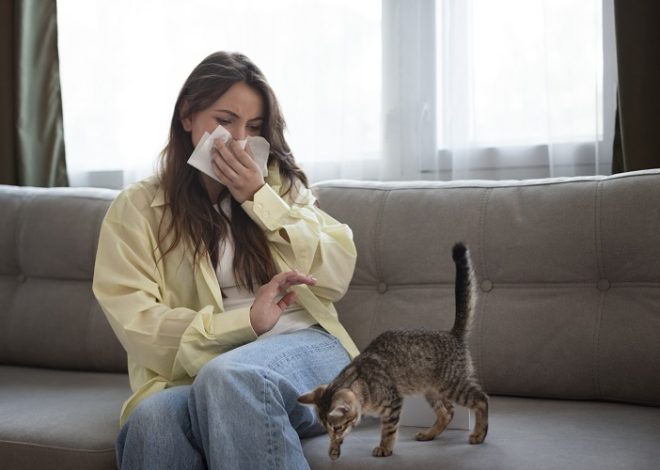Why STD Rates Are Rising in Clay County and Across Florida
Sexually Transmitted Diseases (STDs) have been increasing at an alarming rate across Florida, and Clay County is no exception. Over the last several years, health departments, clinics, and community organizations have reported sharp spikes in infections such as chlamydia, gonorrhea, syphilis, and herpes. While STDs have always been a public health concern, the current surge reflects deeper social, economic, and behavioral changes taking place across the state.
This in-depth article explores the core reasons behind rising STD rates in Clay County and Florida, the communities most impacted, and the steps residents can take to protect themselves. Whether you live in Middleburg, Orange Park, Keystone Heights, or anywhere across the state, understanding these trends is the first step in preventing further spread.
Understanding the STD Surge in Florida
A Growing Public Health Issue
Florida consistently ranks among the U.S. states with some of the highest STD rates. Over the past decade, cases of chlamydia, gonorrhea, and syphilis have risen year after year, creating routine challenges for healthcare providers and local health departments. Several factors play into this trend—ranging from lack of education to limited healthcare access—and Clay County reflects many of the same challenges seen statewide.
Clay County Mirrors Statewide Increases
Clay County’s population has expanded quickly over the last few years, attracting residents from across Florida and other states. Rapid growth often increases the demands on local healthcare systems. When communities grow faster than health resources do, disease detection, treatment, and prevention become harder to manage.
The rise in local STD cases isn’t isolated. Instead, it aligns with the pattern seen across Florida where increased mobility, changing social behaviors, and gaps in sexual health awareness create a perfect environment for infections to spread.
Key Reasons STD Rates Are Rising in Clay County and Florida
1. Limited Access to Sexual Health Services
One of the biggest challenges facing Clay County is access to affordable testing and treatment. While urban centers like Jacksonville have numerous clinics, smaller or rural areas of Clay County may have fewer resources available. Limited transportation, high appointment costs, or lack of awareness about free or low-cost testing can delay diagnosis—and the longer STDs go untreated, the more people unknowingly spread them.
2. Reduced Sexual Health Education
In many Florida counties, sexual education programs vary from one school district to another. Some schools offer comprehensive sexual health education, while others provide minimal instruction. Since STDs can spread rapidly among teens and young adults, insufficient education about safe sex practices, STD prevention, and responsible decision-making leaves many young people vulnerable.
Clay County’s growing youth population increases the importance of factual, medically accurate sexual health instruction. Without it, many rely on misinformation, social media myths, or peer assumptions.
3. Stigma Around Testing and Treatment
STD stigma is still a major barrier to prevention. Many residents feel embarrassed or afraid to get tested, especially in smaller communities where people fear being judged. The stigma is even higher surrounding conditions like HIV, herpes, or syphilis.
This social pressure leads people to avoid clinics, skip testing, or delay treatment until symptoms worsen—putting partners and the broader community at risk. Reducing shame and promoting open conversation is essential for lowering Clay County’s growing infection rates.
4. Dating Apps and Modern Relationship Culture
Florida’s growing urban and suburban lifestyle has increased the use of dating apps, casual connections, and multi-partner relationships. None of these behaviors are inherently risky, but when combined with low condom use and infrequent testing, they create conditions where STDs spread more quickly.
Clay County residents—especially young adults—are increasingly connected through dating platforms, making sexual networks larger and more interconnected than ever before.
5. Increased Population Movement and Tourism
Florida is one of the most visited states in the U.S. Millions of tourists and seasonal residents travel in and out of the state every year. This constant movement increases opportunities for STD transmission.
Clay County’s proximity to Jacksonville and military bases, as well as its growing commuter population, means more interaction with people from high-population or high-transmission areas. Larger and more fluid populations generally experience higher rates of STD spread.
6. Decrease in Condom Use
Public health reports across the U.S. indicate that condom use has declined—particularly among younger adults. Whether due to lack of education, trust-based relationships, or the availability of birth control methods that prevent pregnancy but not infections, lower condom use is directly linked to rising STD cases.
7. Substance Use and Risky Behavior
Substance use is another contributing factor to STD increases. Alcohol and drugs can impair judgment, leading to unprotected sex or multiple partners. Across Florida, communities have noted the impact of substance use on disease transmission, especially syphilis and HIV. Clay County’s growing young adult and nightlife population makes this an important factor locally.
8. Lack of Regular Screening
Many STDs—like chlamydia, gonorrhea, and herpes—can be asymptomatic. This means people often don’t know they’re infected. Without regular screening, infections spread silently. Busy lifestyles, lack of insurance, transportation issues, or clinic availability can make routine testing difficult.
In Florida, where community growth and mobility are high, the delay in screening contributes significantly to rising STD numbers.
Which STDs Are Increasing the Fastest?
Chlamydia
Chlamydia remains the most commonly reported STD in Florida. It is highly contagious, often symptomless, and especially common among young adults aged 15–29. Clay County has experienced steady increases in chlamydia diagnoses, reflecting statewide trends.
Gonorrhea
Gonorrhea cases have risen dramatically nationwide, and Florida is no exception. Growing antibiotic resistance makes gonorrhea harder to treat, raising public health concerns. Clay County healthcare providers report more gonorrhea cases than in previous years, especially among sexually active adults in their 20s and 30s.
Syphilis
Once considered a declining infection, syphilis has returned with force. Florida is among the states with the highest syphilis rates. Particularly concerning is the rise in congenital syphilis (passed from mother to child), which indicates gaps in prenatal screening.
Herpes (HSV-1 and HSV-2)
Herpes remains extremely common, though many cases go unreported since the infection is often mild or asymptomatic. Social stigma and lack of routine testing contribute to the spread.
HIV
HIV continues to affect thousands of Floridians every year. Clay County is not among the highest-risk areas, but increasing statewide numbers highlight the importance of testing and prevention.
How STD Rates Affect Clay County Communities
Impact on Young Adults
College students, high school students, and young working adults represent the largest group affected by STDs. Limited sexual education, peer pressure, dating app culture, and lower condom use all contribute to higher transmission rates.
Impact on Families
Rising STD rates can affect family planning, pregnancy, and prenatal care. Syphilis and HIV pose particular risks to unborn children if not detected early, making regular screening essential for pregnant women.
Impact on Healthcare Systems
As cases rise, local clinics, hospitals, and public health departments face increased pressure to expand testing, education, and treatment programs. Counties like Clay may experience strained resources or delayed testing if demand grows too quickly.
What Clay County Residents Can Do to Protect Themselves
1. Get Tested Regularly
Testing is the most effective way to stop STD transmission. Many infections have no symptoms, making routine screening crucial—especially if you have new or multiple partners.
Local health departments and clinics in Clay County offer confidential, low-cost testing options.
2. Use Condoms Consistently
Condoms significantly reduce the risk of most STDs. Whether you’re in a committed relationship or dating casually, consistent protection remains one of the most reliable preventive tools.
3. Communicate with Partners
Open and honest conversations about testing, sexual history, and protection help reduce risk and build healthier relationships. Removing stigma encourages partners to make informed decisions.
4. Treatment Early
Early treatment prevents complications and stops further spread. If you test positive or notice symptoms like discharge, sores, burning, or itching, medical care immediately.
5. Take Advantage of Community Resources
Clay County residents can use public health services offering:
- Free or low-cost testing
Educational workshops - Prevention programs
- Treatment referrals
These programs play a critical role in lowering local infection rates.
The Future of STD Prevention in Clay County and Florida
Improving Sexual Education Programs
One of the most effective long-term solutions is comprehensive sexual health education. Programs that teach safe sex practices, consent, communication, and prevention can dramatically reduce STD rates.
Expanding Access to Healthcare
More clinics, mobile testing units, and community outreach initiatives will help reach rural and underserved populations in Clay County. Affordable, accessible care is a cornerstone of disease prevention.
Promoting Regular Testing Campaigns
Public health campaigns encouraging regular screening—especially for young adults—help detect asymptomatic infections early and limit spread.
Using Technology for Prevention
Apps and online platforms that offer digital health consultations, online booking for STD tests, and confidential reminders make healthcare more accessible to younger populations.
Reducing Stigma
Normalizing conversations about sexual health is crucial. When people feel safe discussing testing and treatment without judgment, infections are caught earlier and transmission decreases.
Conclusion: Clay County and Florida Must Act Now
The rise of STD Rates In Clay County and across Florida is not just a statistic—it’s a call to action. The surge is driven by a combination of factors: limited healthcare access, education gaps, stigma, modern relationship behaviors, and the increasing population mobility that defines Florida today.
But the trend can be reversed.
By improving education, encouraging regular testing, expanding access to services, and building a community where people feel safe discussing sexual health, Clay County can protect its residents and prevent further growth in infections.
Sexual health is a shared responsibility. Every resident—regardless of age, background, or relationship status—plays a role in stopping the spread. Knowledge is the first step. Action is the next.


